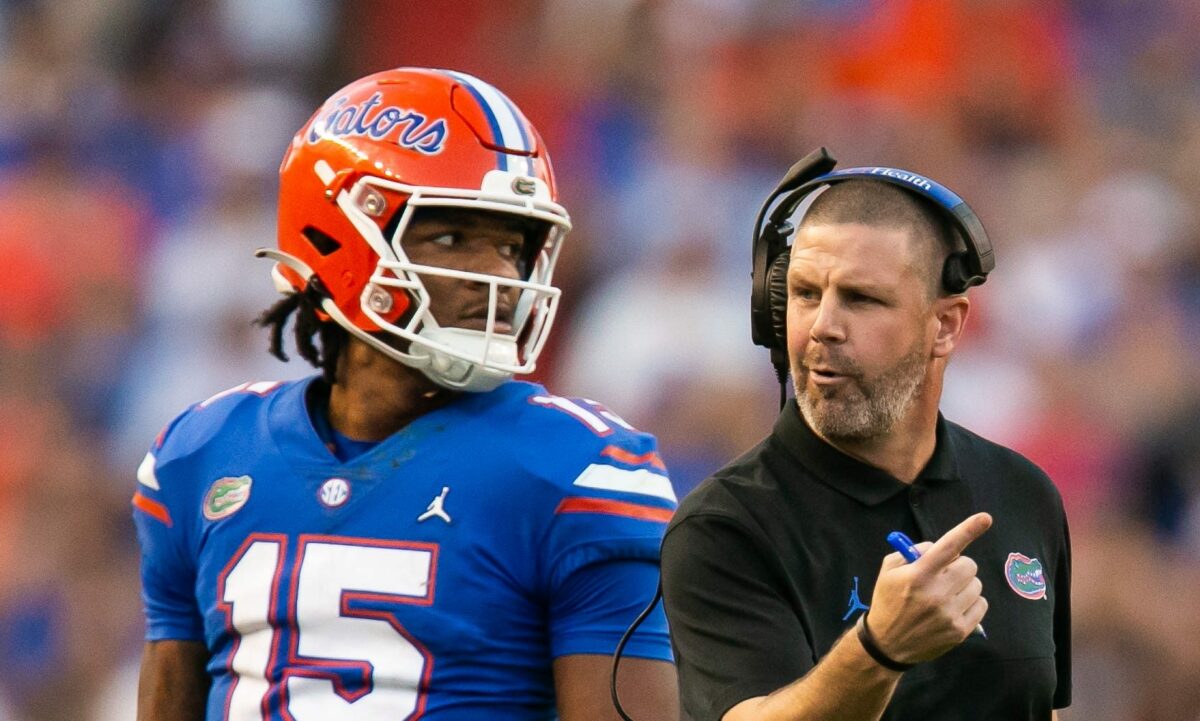As my former Touchdown Wire colleague and current SB Nation NFL majordomo Mark Schofield likes to say, when it comes to quarterbacks, progress is not linear. You never know if, when, and to what degree the light is going to go on, and what will happen if and when it does.
In the case of Florida quarterback Anthony Richardson, who declared for the 2023 NFL draft this week, we’re left with one full season as a starter — 2022, in which he completed 176 of 327 passes (53.8%) 2,549 yards (7.6 YPA), 17 touchdowns, nine interceptions, and a passer rating of 85.5. In two seasons with the Gators before that, Richardson had completed just 39 of 66 passes (59.1%) for 556 yards (8.4 YPA), seven touchdowns, six interceptions, and a passer rating of 83.9.
Richardson also ran 161 times for 1,116 yards, 6.9 yards per carry, and 12 touchdowns, but that’s the part that’s established. What NFL teams need to evaluate is where he is as a passer, and what needs to be done to bring his talent up to his potential.
There are those who have already come out and said that Richardson is a two-year project as a professional quarterback, and yet, he shows the kind of flashes that should have him selected in the first round. That may be the case, but work with me here — what if the first year of two years needed before Richardson can really succeed in the NFL is 2022, and he’s shaved a year off with his growth in his one college starting season?
Both tape and stats show a major upswing in development.
In Weeks 1-6 of the 2022 season, Richardson looked very much like what he was — a quarterback with limited experience, finding his way. Over that stretch of time, his stats were… well… unremarkable.
- Richardson completed 79 of 144 passes (54.9%) for 1,178 yards (8.2 YPA), five touchdowns, seven interceptions, and a passer rating of 73.2.
- The deep throws were incendiary when on, and mystery meat when not. He completed 14 of 30 passes of 20 or more air yards (46.7%) for 498 yards (16.6 YPA), three touchdowns, two interceptions, and a passer rating of 98.6.
- Under pressure, Richardson completed 15 of 44 passes (34.1%) for 209 yards (4.8 YPA), one touchdown, one interception, and a passer rating of 48.4.
Now, when we get to Weeks 7-13, we are dealing with an entirely different quarterback.
- Richardson completed 96 of 186 passes (51.6%)for 1,375 yards (7.4 YPA), 12 touchdowns, two interceptions, and a passer rating of 92.9.
- On throws of 20 or more air yards, he completed 12 of 34 passes (35.3%) for 502 yards (14.8% YPA), six touchdowns, no interceptions, and a passer rating of 132.7.
- Under pressure, he completed 26 of 64 passes (40.6%) for 384 yards (6.0 YPA), six touchdowns, two interceptions, and a passer rating of 79.2.
Perhaps most importantly for the purposes of projecting him to an NFL passing game, Richardson showed radical improvement in the second half of the season in short and intermediate throws.
- In Weeks 1-6, on throws of 0-19 air yards, Richardson completed 67 of 116 passes (57.8%) for 705 yards (6.1 YPA), two touchdowns, five interceptions, and a passer rating of 63.3.
- In Weeks 7-12, on throws of those air distances, he completed 84 of 153 passes (54.9%) for 880 yards (5.8 YPA), seven touchdowns, two interceptions, and a passer rating of 81.6.
Are the completion rates still a concern? Absolutely, and they will be more so in an NFL that requires a higher yield than this. We will get into the reasons for this in our tape review. But in an overall sense, it’s clear that Anthony Richardson took some major steps forward in his one year as an NCAA starting quarterback.
Now, the question is, what will it mean to the NFL?
